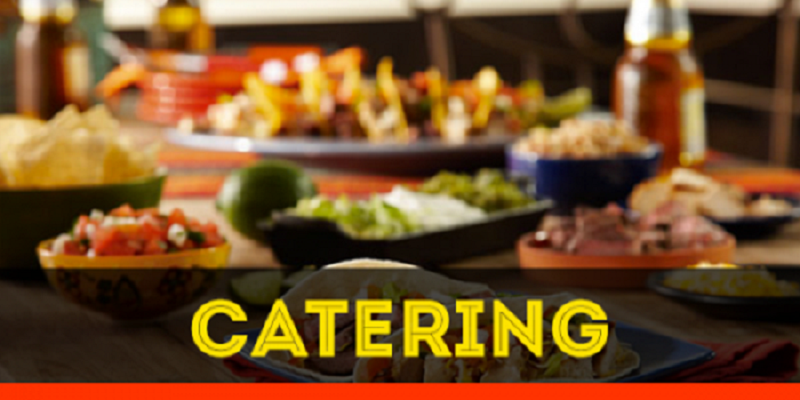Catering for event planners
Jul 03, 2018 | Divyesh AmiparaFood is the cornerstone of any event and as an event planner you need to be well versed in everything catering related.
Catering is used for a wide range of events including weddings, parties, office lunches, meetings, conferences, anniversaries, graduations, baby showers among other things. As well as providing the food and beverage many caterers also provide other services such as the decorations and A/V aspects of the event.
The catering manager will oversee all the employees, including wait staff, chefs as well as the logistics associated with all aspects of the event that they are responsible for (at the very least making sure food is delivered to the venue).
To make you job easier, here are some terms event planners should know that will help them when dealing with caterers.
A la carte: French phrase meaning according to the menu, referring to a variety of differently priced dishes
A la mode: Another French term, indicating a dessert will be served topped with ice cream
Amuse-bouche: Literally translating to ‘mouth-amuser’ – refers to Hors d'oeuvre that has been prepared according to the chef’s selection
Apertife: A light alcoholic beverage that is used to stimulate your appetite before dinner
Back of house: Also known as backstage, operations behind the scenes that your guests don’t and shouldn’t see such as food preparation
BEO: Banquet Event Order: a document that outlines the details of your event and serves as a guideline for the event venue to communicate logistics to all necessary departments
Bowl food: Small bowels of food passed amongst your guests during a standing, informal reception
Canape: Bite sized appetizers
Charger: Large plates used to decorate the table (food is not served on them)
Corkage: A fee charged per bottle for opening and serving wine brought in by the client
Crudité: Traditional French appetizers consisting of sliced or whole raw vegetables which are sometimes dipped in a vinaigrette or other dipping sauce.
Dry hire: Hiring only a venue (no labor, assistance, furniture or delivery). It’s important to be aware of this when hiring any venue
Deposit: The amount you have to pay in advance of your booking
Digestif: A drink, especially an alcoholic one, usually drunk after a meal to aid digestion.
Dueling Menus: split entres often used to introduce more exotic menu items. For example instead of 8 ounces of either steak or fish you serve 4 ounces of both (this is known as a surf and turf)
F&B: Short for Food and Beverage
Family Style: Where food is put on a large plate in the middle of each table and people serve themselves from there
Food Stations: Areas at an event that contain different kinds of food (for example you could have a meat station, salad station, dessert station)
French service: Where partially cooked food is brought out from the kitchen, where the chef finishes cooking in front of the guests and then served.
Front of house: Also known as frontstage everything you do that your guests see
In-House: Everything that the caterer already has for example, the might have in house bar facilities
Intermezzo: An intermission or break in meal service just before the main course
Linens: The napkins and table cloths
Market Price or AQ (As Quoted): Where the price of menu items aren’t set and fluctuate (usually due to seasonal shifts in food availability)
Mise en place: Translates to “put in place” referring to setting up all aspects of the event
Paté: A paste made out of cooked ground meat
Petit Fours: Small decorative cakes
Plated service: Food is prepared and pre-portioned in the kitchen of a restaurant. The food is then served to patrons on plates by a waiter.
Out mess: Small meals provided to event staff that are eaten away from the main event (backstage)
Pre-con Meeting: Also known as an operations meeting. It is held with event vendors and suppliers where the event or program is scheduled to take place. It is held usually one or two days prior to the actual event
Placement: The correct way of displaying cutlery, crockery and glassware on the table
Platters: A large flat dish or plate for serving food. They’re usually for the presentation of finger food such as canapes
Props: Decorations that have no other purpose except for aesthetics and to convey a theme. Examples include balloons, flowers and ribbons
Service: The delivery of food and drink to all the guests
Set Up: Getting the venue and equipment ready for the event before hand
Shuck: The process of opening an oyster shell
Silencer: Padding placed under the table cloth to prevent dishes from making a clutter noise during the event.
Site visit: Walking through the venue before the event in order to plan the finer details based on the venues physical attributes
Snake Service: Synchronized meal service where several tables are served at the same time by a line of servers.
Sommelier: A professional specializing in serving wine and matching it with the meal
Tasting: A pre event meeting where the event planner and client tastes menu options before finalizing the meal plan with the catering manager or chef
Whisper Call: Where a Maître De walks to each guest asking them to take their seats, an alternative to a traditional loud speaker message
.png)












